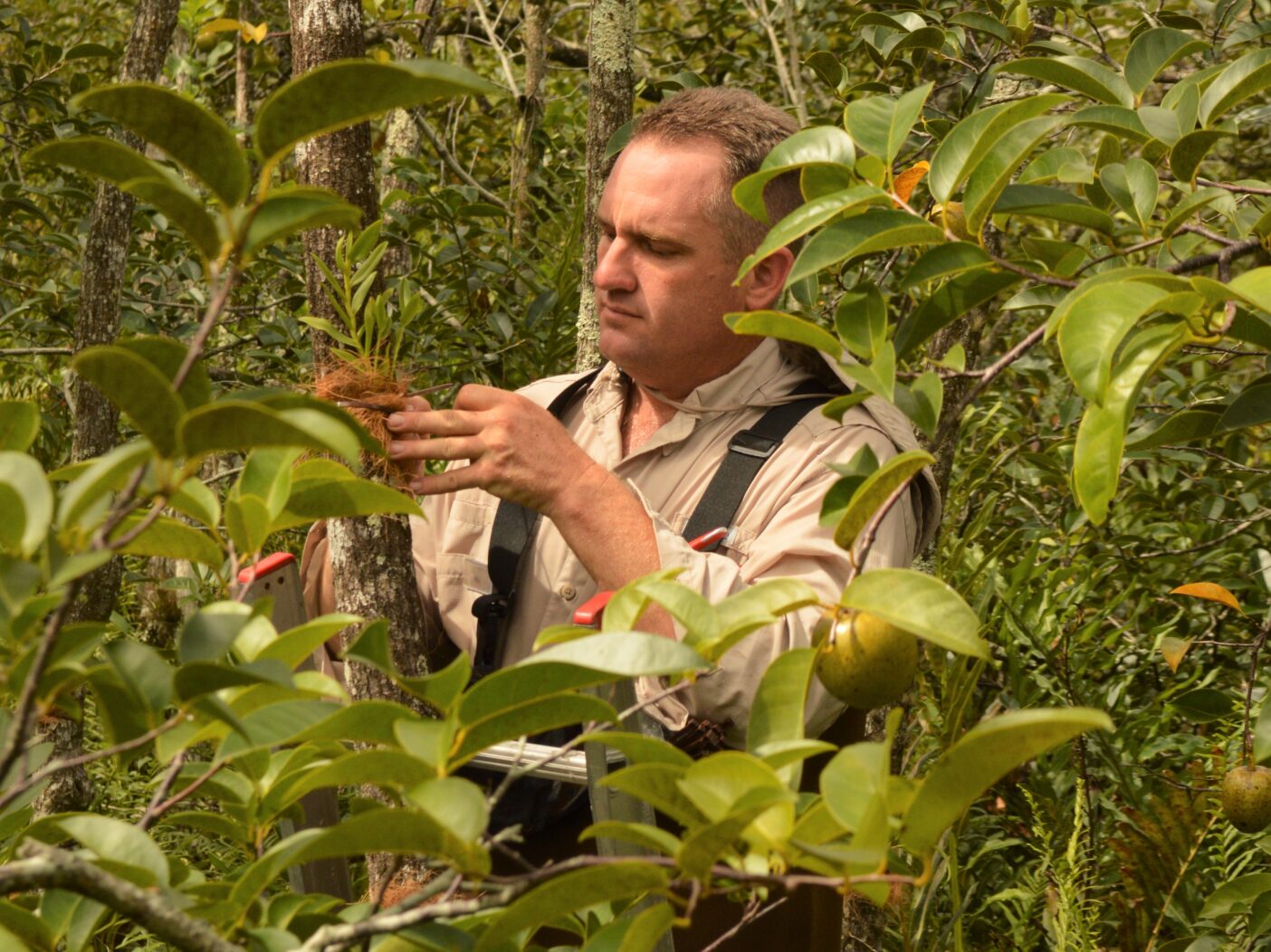
Discover rare and endangered native orchids and get a taste of the swamps at Naples Botanical Garden.
In Naples Botanical Garden’s natural areas, native orchids grow by the hundreds. But you need to look carefully to see them.
With just over 100 species, Florida has the richest diversity of native orchids in the United States, however, most are subtle things — leafless epiphytes that cling to tree bark or leafy varieties that blend into their hosts’ foliage. You need to pause and peer and maybe play something akin to the old road-trip game: “I spy with my little eyes … a sprig of leaves that doesn’t match the others.” That’s probably a native orchid. Zip ties are another giveaway. Look for bands around trees; chances are good they currently or previously embraced an orchid.
“You have to look closely,” says Nick Ewy, the Director of Collections. “Look up. Look down.” He points out the most prized species of all — the ghost orchid (Dendrophylax lindenii). It is just off the Sönne Family Ghost Orchid Boardwalk, about halfway up a pond apple tree. Forgive me, orchid enthusiasts, for though I revere a blooming ghost as much as you do, a dormant one reminds me of a squished spider, a tangle of gray-green roots lying flat against the bark. You need to look very closely, indeed, to recognize this tiny thing as a botanical giant.
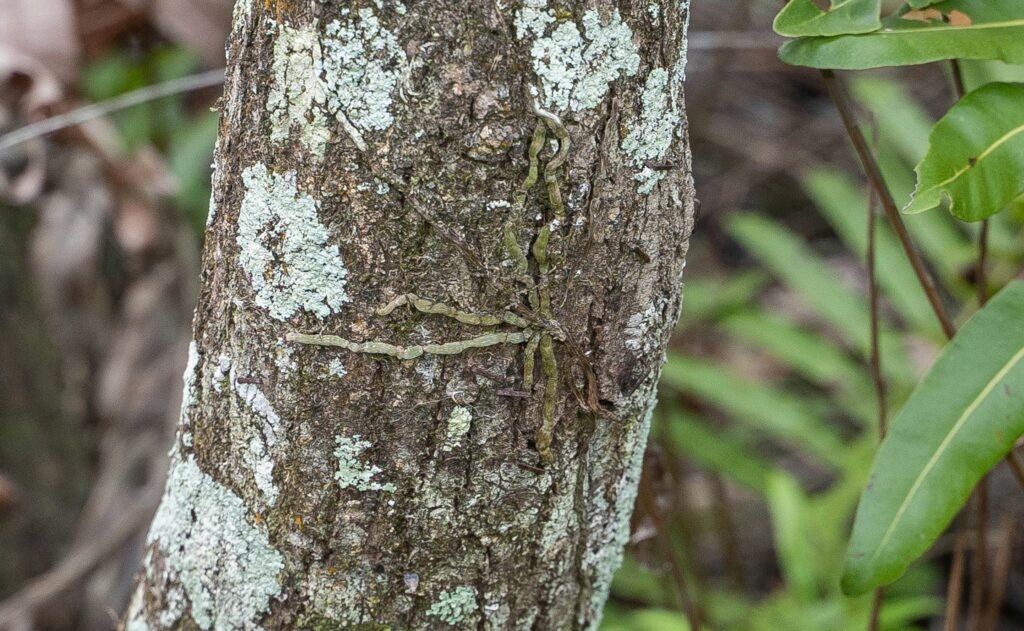
This specimen symbolizes how the Garden’s Preserve contributes to orchid research and conservation. In 2015, we installed 80 ghost orchids on trees as part of a groundbreaking trial at the University of Florida Institute for Food and Agricultural Sciences (UF/IFAS). Scientists there had figured out how to propagate ghost orchid seeds in the lab and wanted to test their survivability outdoors. We placed 40 lab-grown ghosts along the boardwalk and the remainder in non-public spaces to monitor their viability. (The nearby Florida Panther National Wildlife Refuge is the primary research site.) Unfortunately, Hurricane Irma in 2017 and last year’s Hurricane Ian punched holes in our canopy, resulting in the death of many light-sensitive native orchids. The dormant ghost that I saw is the trial’s last-known survivor along the boardwalk. (One other remains in the non-public area; a third is in the nursery, doing well.)
Nevertheless, this swampy area of the Garden, along with the coastal scrub habitat beyond it, acts as a living laboratory, public classroom, and conservation area for plenty of other native orchids, including six ghosts provided by Atlanta Botanical Garden. About 70% of Florida’s native orchid species are state-endangered or state-threatened, making any efforts to increase their populations and provide habitat important. The Garden is part of a multi-institution team exhibiting native orchids and discussing the imperative for conservation at the RHS Chelsea Flower Show, one of the world’s oldest and most renowned botanical events.
Ewy and his colleagues have spent the last several years enhancing the wetland, adding cypress trees and roughly 270 pop ash, the preferred host of many native orchids. In time, their foliage will fill gaps in the canopy, providing shade necessary for orchid survival.
“We’re planning for the future,” Ewy says. “This will become a much better showcase for these native plants.”
For years, Ewy has propagated native orchids in an on-campus laboratory and affixed them to trees. Reproduction in the wild is a dicey thing. Many native seeds are as small as dust particles, pollinators can be sparse, and habitat needs are exacting.
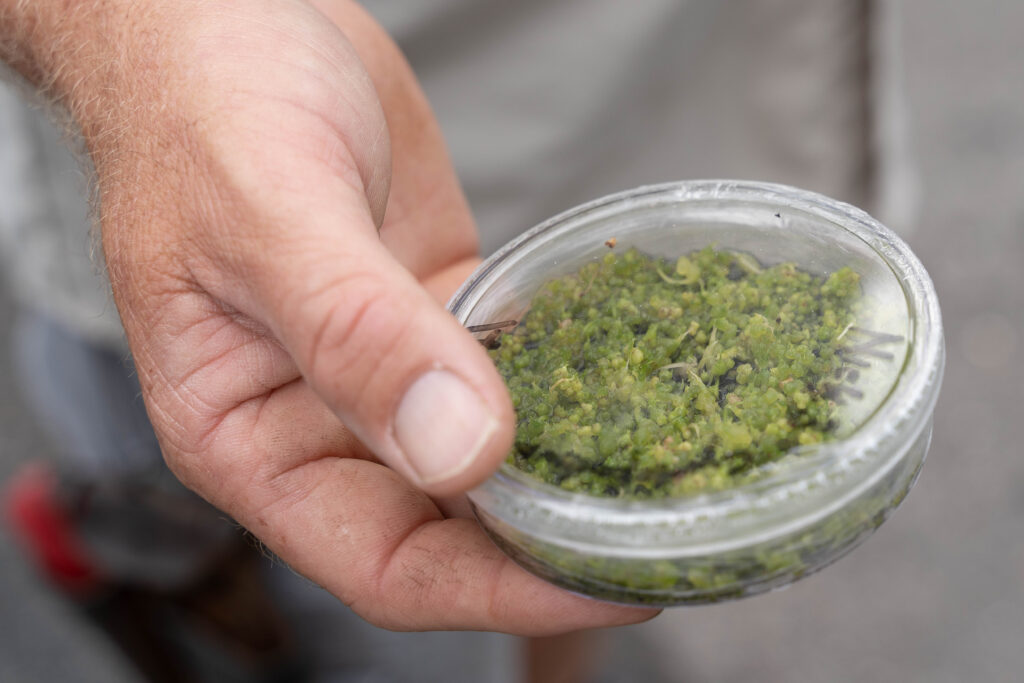
Results have been mixed, with numerous orchids succumbing to sunlight following the hurricanes. But many others have survived, giving Ewy a chance to observe them — and the public an opportunity to see them and their unique habitat without trekking through the wild.
Ewy, on the other hand, routinely visits the swamps. The Garden’s proximity to places like Fakahatchee Strand Preserve State Park, Big Cypress National Preserve, Rookery Bay National Estuarine Research Reserve, and the Florida Panther National Wildlife Refuge means our specialists are tapped often to contribute to regional orchid conservation efforts. Ewy is part of a team that explores Fakahatchee Strand to survey Habenaria distans, or false water spider, a terrestrial orchid known to exist only in the park. The group monitors the plants to see if the populations are stable or shrinking, understand what pressures they face, and study what factors might prompt them to flower. Ewy, with a state-issued permit, collected seeds earlier this year and is working to propagate them in the lab and trial them in greenhouse conditions and outdoor settings.
“As far as we know, no one’s ever grown the species ever before,” Ewy says.
Back to the Garden.
Beyond the Ghost Orchid Boardwalk, you can access other portions of the Preserve, including a coastal scrub habitat. Once common in Southwest Florida, developers have purchased most of these high, dry, sandy ecosystems because they make for easy construction sites.
In this area, Ewy has planted Tolumnia bahamensis, an orchid otherwise known as Florida’s dancing lady.
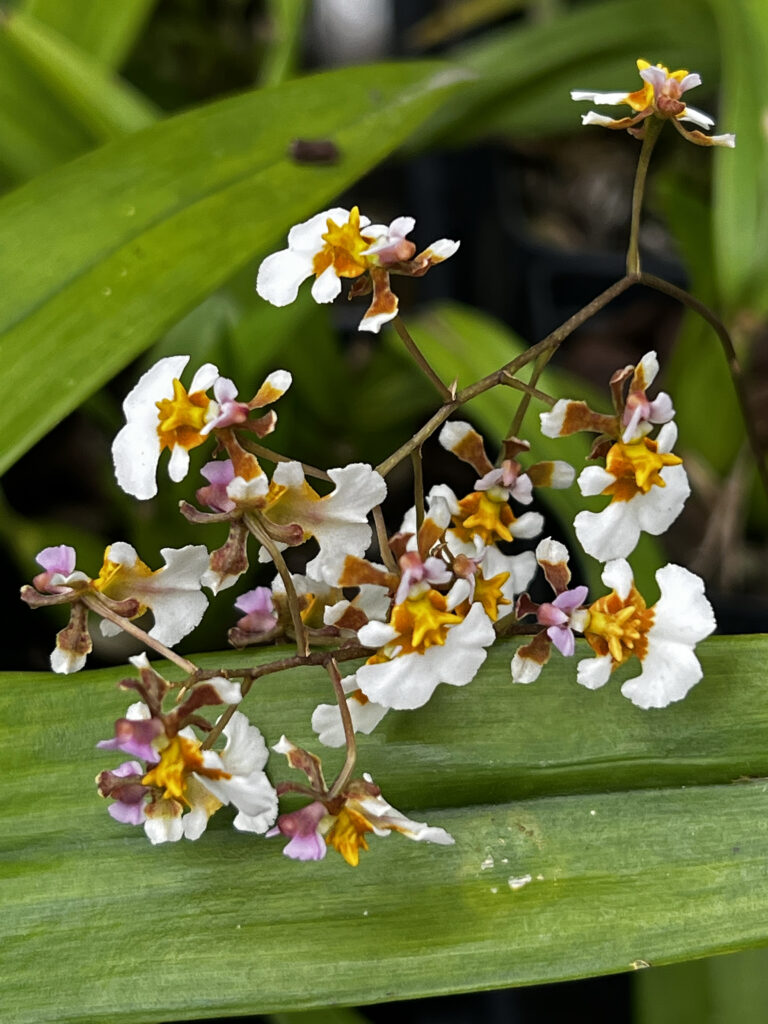
“Oh, good, it’s blooming,” he says, as he peers behind a Florida rosemary bush (Ceratiola ericoides) and sees a sprig of white flowers. “That’s a really nice one.”
Ewy’s first batch fell victim to gopher tortoises; he now encases them behind wire fencing. The plants came from Atlanta Botanical Garden, which is trying to increase the dancing lady’s population. The only wild-occurring plants are found in Jonathan Dickinson State Park in Southeast Florida.
More common, but certainly no less impressive, are the butterfly orchids (Encyclia tampensis), which adorn multiple trees. The scrub is also a place to find species that co-exist with native orchids, such as Tillandsia, lichens, ferns, and mosses. Ewy is pleased to see several large giant air plants (Tillandsia ultriculata) growing in the branches of oak trees. In the mid-2010s, an invasive weevil decimated numerous species of air plants. Naples Botanical Garden and Marie Selby Botanical Gardens joined a conservation project at Fakahatchee Strand, where the weevils were especially pervasive. Garden specialists helped park officials rescue the survivors. They brought them to greenhouses at the two gardens, treated them for the pests, and grew them to maturity. Once the plants produced seeds, specialists returned them to Fakahatchee to disperse those seeds and, hopefully, begin replenishing the depleted population.
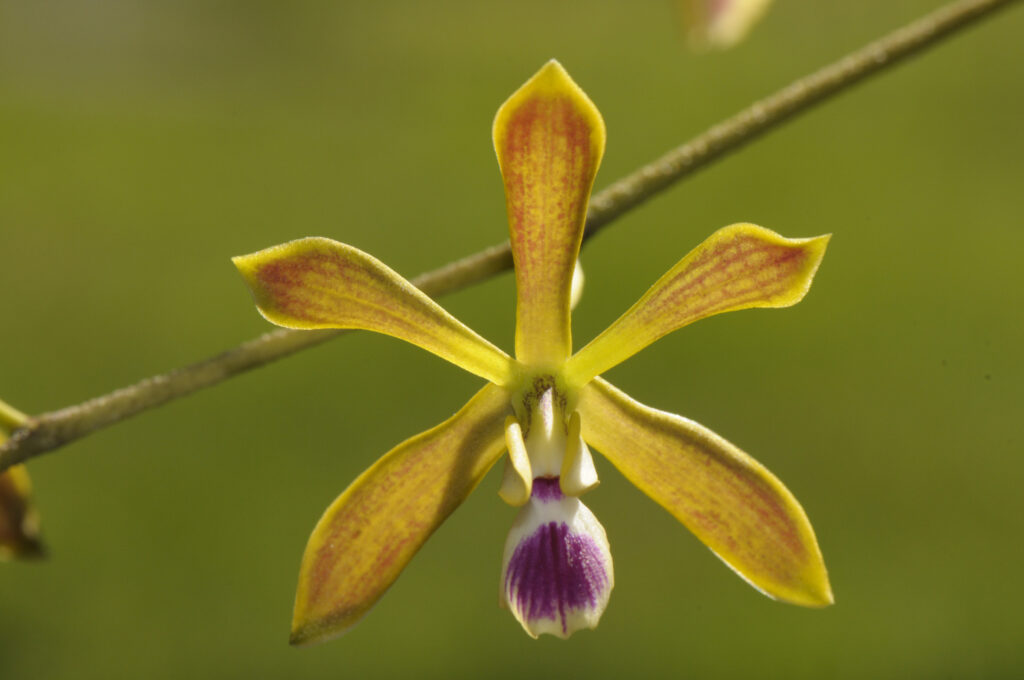
The Garden will send samples of Tillandsias, along with Guzmania, Peperomia, and Catopsis species to the Chelsea Flower Show to augment the Florida native orchid display.
The Garden’s orchid work is about to expand with the opening of the Evenstad Horticulture Campus this fall. The new facility includes an orchid lab where Garden specialists can expand upon the work they’ve begun with native orchids. Currently, the Garden shares laboratory space with Florida Gulf Coast University, which has a satellite location on our campus.
“I really want to ramp up production,” Ewy says. “Once we have the facility up and running, we’ll have space to have thousands of seedlings.”

About the Author
Jennifer Reed is the Garden’s Editorial Director and a longtime Southwest Florida journalist.


